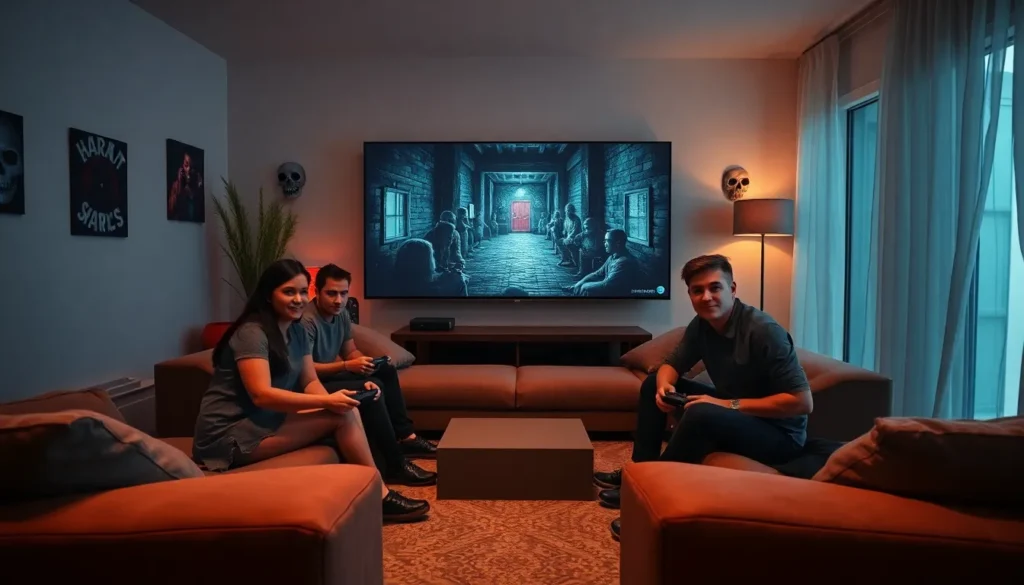When sleepless nights turn into a recurring theme, many find themselves reaching for Lunesta, that little blue pill promising sweet dreams. But before diving headfirst into a slumber party with this sleep aid, it’s crucial to ask the million-dollar question: Is Lunesta habit forming?
The allure of a peaceful night’s sleep can be tempting, but understanding the potential risks is no laughing matter. While Lunesta can help you drift off like a baby, it’s wise to consider if it might also lead to a not-so-funny dependence. Let’s unravel the mystery behind this popular sleep aid and discover whether it’s a trustworthy companion or a slippery slope to sleeplessness.
Table of Contents
ToggleOverview of Lunesta
Lunesta, also known by its generic name eszopiclone, serves as a prescription medication designed to aid individuals grappling with insomnia. Often recommended for short-term use, Lunesta functions by enhancing sleep onset and duration. This sleep aid operates through the modulation of gamma-aminobutyric acid (GABA) receptors in the brain, promoting relaxation and sleep.
Typically, Lunesta’s effects manifest within 30 minutes after consumption and can last up to 8 hours. Many users report a greater likelihood of falling asleep faster than without medication. Interestingly, the potential for next-day drowsiness exists, particularly in cases of incomplete sleep duration, leading to diminished alertness.
Various dosages are available to tailor treatment to individual needs, with recommended starting doses generally set at 1 mg for adults. Maximum doses can reach up to 3 mg, depending on the patient’s response. Its appeal lies in providing immediate relief for sleep difficulties, contributing to its widespread use.
Despite its advantages, concerns regarding dependence remain prevalent. Some studies indicate a risk of developing tolerance, where increasing doses may be necessary for the same effect. Regular use or abrupt discontinuation may lead to withdrawal symptoms. Consequently, healthcare professionals recommend monitoring the duration of use and regularly assessing the necessity of the medication.
Lunesta functions as a popular sleep aid for insomnia. Understanding the medication’s mechanisms, effects, and potential risks aids individuals in seeking effective treatment while remaining cognizant of legal and health implications.
Mechanism of Action
Lunesta acts primarily by influencing neurotransmitter activity in the brain, specifically targeting GABA receptors.
How Lunesta Works in the Brain
Lunesta enhances the effects of gamma-aminobutyric acid (GABA), a neurotransmitter that promotes relaxation and sleep. This enhancement occurs through binding to specific GABA-A receptor subtypes, which increases inhibitory signaling. Increased inhibitory signaling leads to a calming effect on neuronal activity, facilitating more efficient sleep initiation. Users experience an earlier onset of sleep due to this mechanism, making Lunesta effective for treating insomnia symptoms.
Duration of Effect
The effects of Lunesta typically manifest within 30 minutes of ingestion. This quick onset aligns with user reports of faster sleep onset. The action can last up to 8 hours, allowing a substantial duration for restorative sleep. Users taking higher doses may experience prolonged effects, but this can lead to next-day drowsiness if sleep duration is insufficient. Individual responses may vary, so dosage adjustments may be necessary to optimize the duration while minimizing side effects.
Potential for Habit Formation
Understanding the potential for habit formation with Lunesta is essential for users. Lunesta, or eszopiclone, may lead to dependence, especially when used for extended periods. Long-term use often results in tolerance, meaning higher doses are needed to achieve the same sleep-inducing effect. The risk of withdrawal symptoms arises when discontinuing the medication abruptly. Regular monitoring by healthcare professionals can minimize these risks. Users should keep track of their sleep patterns and discuss any concerns about reliance on Lunesta with their doctor.
Understanding Dependence
Dependence on Lunesta occurs when the body adapts to the presence of the medication. This adaptation may lead users to feel they cannot sleep without it. Symptoms of dependence can include insomnia and heightened anxiety after stopping the drug. Healthcare providers typically assess the duration of use to identify potential issues. Recognizing early signs of dependence can help mitigate long-term consequences. Users are encouraged to maintain open conversations about their experiences and concerns.
Types of Dependence
Two primary types of dependence can develop with Lunesta: psychological and physical. Psychological dependence involves users believing they need the medication to sleep, creating an emotional reliance. Physical dependence, on the other hand, manifests through withdrawal symptoms when the medication is discontinued. These symptoms can include rebound insomnia, anxiety, or irritability. Understanding both types enables users to address potential issues proactively. Seeking guidance from healthcare professionals can offer strategies for reducing dependence safely.
Evidence from Clinical Studies
Studies indicate Lunesta carries a risk of habit formation. Research published in journals like The Journal of Clinical Psychiatry highlights that a subset of users may develop tolerance over time, requiring higher doses to achieve the same sedative effect.
Clinical trials demonstrate that 10% to 15% of individuals may experience withdrawal symptoms upon discontinuation of Lunesta. Symptoms include rebound insomnia and increased anxiety. Duration of use significantly influences these outcomes, with longer usage correlated to higher dependence risks.
Research also examines the difference between psychological and physical dependence. Psychological dependence often manifests as a perceived inability to sleep without the medication. Physical dependence, on the other hand, occurs with observable withdrawal symptoms and often results from prolonged use of high doses.
A review by the American Academy of Sleep Medicine underscores the need for careful prescribing practices. Patients receiving Lunesta for extended periods require regular assessments of medication necessity and effectiveness. Continuous monitoring helps identify dependence early.
Evidence suggests that proper dosage control minimizes risks. Starting with the lowest effective dose, typically 1 mg, and adjusting based on response, limits the potential for tolerance and withdrawal.
Data from clinical studies presents a clear picture. Lunesta can be habit-forming for some individuals, highlighting the importance of informed usage and close supervision by healthcare professionals. Regular evaluations foster an understanding of dependency risks while ensuring safe treatment for insomnia.
Factors Contributing to Habit Formation
Understanding the factors that contribute to habit formation with Lunesta is crucial for users seeking safe and effective sleep solutions.
Individual Differences
Responses to Lunesta can vary significantly among individuals. Genetics, tolerance levels, and personal health history influence how one metabolizes the medication. Some may experience effective sleep relief without complications, while others might develop dependence more quickly. Psychological factors also play a role; stress levels and sleep anxiety can increase reliance on the medication. Studies suggest that those with a history of substance use disorders are more vulnerable to habit formation. Individual sensitivity to the drug’s sedative effects impacts risk factors uniquely.
Dosage and Duration of Use
Dosage and duration of use directly contribute to the likelihood of developing dependence on Lunesta. Starting at a dose of 1 mg allows healthcare professionals to monitor patient responses effectively. Higher doses, up to 3 mg, may enhance sleep but raise the chance of tolerance. Extended use beyond recommended guidelines can heighten addiction risks. Duration matters too; prolonged use beyond several weeks has shown a correlation with withdrawal symptoms upon cessation. Careful dosage adjustments and periodic evaluations ensure users receive only what they need, minimizing potential adverse effects. Regular consultations with healthcare providers provide a safeguard against developing harmful habits.
Lunesta can be an effective solution for those struggling with insomnia but it’s essential to approach its use with caution. The risk of habit formation is a significant concern that shouldn’t be overlooked. Users may experience tolerance and withdrawal symptoms with prolonged use.
Regular consultations with healthcare providers can help manage these risks and ensure that Lunesta remains a safe option. By understanding individual responses and adhering to prescribed dosages, individuals can mitigate potential dependence. Awareness and open communication about sleep issues are crucial for anyone considering Lunesta as a long-term sleep aid.










